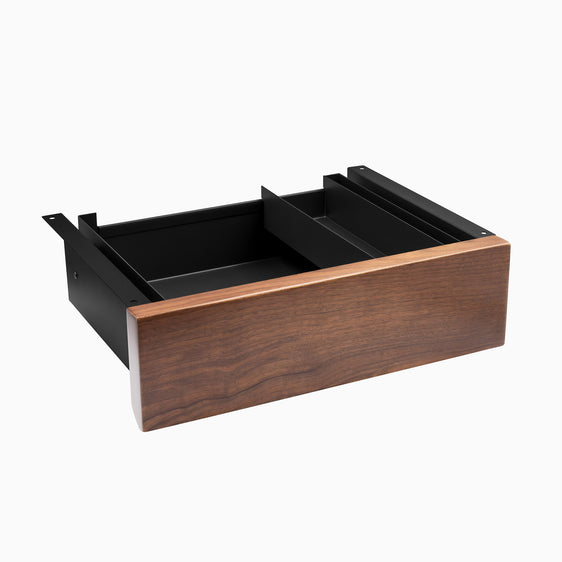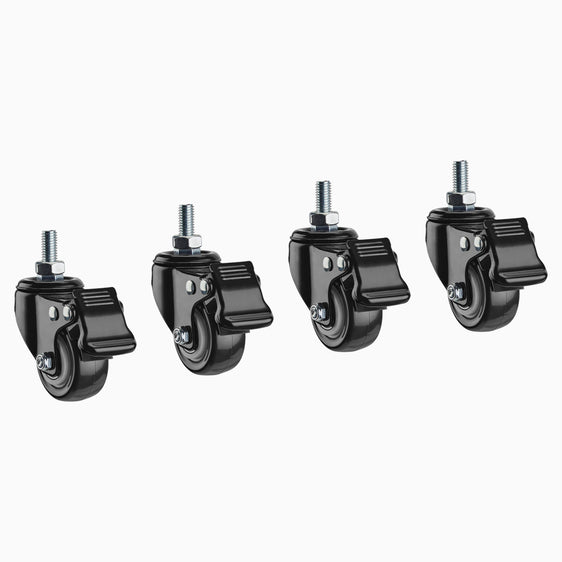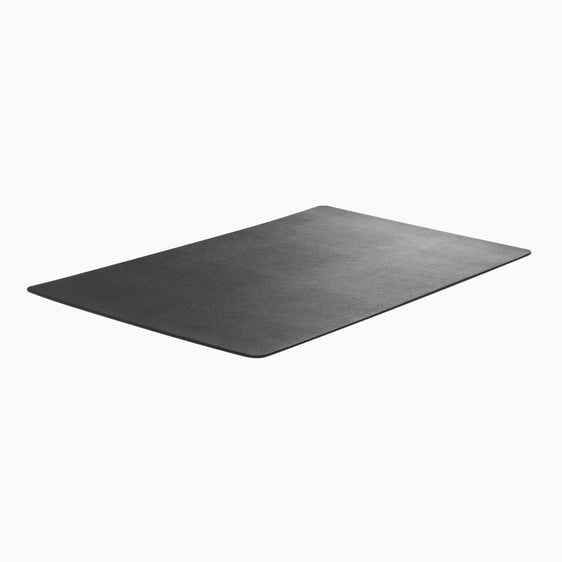
News
Do Standing Desks Help With Sciatica?
Hayden AdamsSciatica is a common spine health condition that causes lower back pain that can often spread into the legs. People struggling with the chronic condition often wonder, "Do standing desks help sciatica?"
A standing desk offers an alternative for long days spent sitting in an office chair, but will it go the distance in helping reduce or eliminate sciatic nerve pain? Does sitting cause sciatica? Read on to find out why and how a standing desk for sciatica might help.
What Does Sciatica Pain Feel Like?
Sciatica pain isn't just a common term for back pain. It varies from person to person, but it's generally described in a range from dull and tingling to sharp, stabbing pains. It starts in the lower spine, known as the lumbar spine. The sciatic pain can be burning, tingling, dull, sharp, or numb.
Sciatica symptoms include:
- Moderate to severe lower back pain and pain throughout buttock and leg
- Numbness or weakness in the same area
- Pain that gets worse as you move
- Loss of movement
- A feeling of pins and needles emanating from the sciatic nerve
If you have been struggling with constant pain that sounds like it may be sciatica pain, it's smart to make an appointment at a spine health center to speak with a spine specialist or orthopedic spine surgeon to discuss conservative treatment modalities that may relieve your pain.
What is the Main Cause of Sciatica?
Sciatic pain occurs often because of a herniated disc, a bone spur, or spinal stenosis, which is a narrowing of the spinal column. When one of these occurs, it compresses, or pinches, part of the sciatic nerve and leads to inflammation. The inflammation then causes pain and possible numbness in the respective leg.
Sciatica pain begins in the body's two largest nerves, the sciatic nerve. Found at the base of the spine and throughout the buttocks, these nerves work their way down to the feet. When a root or nerve fiber of these nerves gets pinched or irritated in some way, the pain will begin to radiate throughout the local area.
A rare cause of sciatica pain is a tumor compressing the nerve or nerve damage from a disease such as diabetes.
Is Sitting Or Standing Better For Sciatica?
Sitting with sciatic nerve pain for long periods can make matters a lot more uncomfortable and painful and exacerbate the condition.
How? When sitting, you apply pressure to your sciatic nerves and the surrounding muscles. Over time, this pressure can turn into an excessive strain that can worsen the pain. Data even shows that the tension on spinal discs when sitting increased as much as 40% compared to standing.
Sitting in an office chair with sciatica pain can also cause you to sit in an awkward position to reduce the discomfort. Since sciatica makes it hard to get and stay comfortable, you may move around more frequently and irritate the nerve further.
When you consider those who have sciatica and work for long periods at a time, upward of 8 or 9 hours a day sitting in a desk chair, it's no wonder that the act of sitting is impacting their pain.
Sitting with Sciatica
If you're going to sit, ensure it's with proper posture, not poor posture. Good posture keeps your spine aligned and eliminates unnecessary pinching or tension. If possible, use a lumbar support pillow to support your spine.

Don't cross your legs – you want your limbs aligned to promote blood flow. Keep your feet grounded and bent at 90º.
Use a chair with wheels to reduce turning, and adjust the height of the chair so that your elbows are also at 90º and can easily rest on your desk or keyboard.
Then, adjust your computer so you're looking straight ahead at it. Check out our ergonomic guide to setting up your office for more.
Does Standing Help Sciatica
If you're standing, be cautious of how long you stand without taking a break. Sciatica pain when standing is generally less than when sitting, and alternating your position is the best thing you can do to reduce pain and avoid uncomfortable consequences.

Well, is standing good for sciatica? If you're standing at work, ensure you have a supportive work environment that you can modify to support a standing posture. A standing desk is the best way on how to stand with sciatica and keeping your body aligned and happy while working and standing.
You may even want to use a small elevated surface like a box or step stool to take the weight off your legs one at a time while using your standing desk, switching legs about every 10 minutes.
{{ spec_dual_melamine_desk }}
Does Standing Make Sciatica Better or Worse?
Since sitting places a lot of stress on the discs in between your spine's vertebrae and makes sciatica symptoms worse, standing releases this tension and can help your nerves decompress as long as it's not for a prolonged period.
Standing keeps your body active and your core engaged while your joints and spine are in line. The key here is using good posture. If you let your posture go, you can move your spine out of alignment and create unneeded physical stress.
Using a standing desk can be one way to stay standing mindfully, just set a timer for every 30 to 60 minutes to sit down in an office chair with lumbar support or take a walking break.

Standing is not the end-all and be-all answer to relieving the pain. Too much standing is also not a good thing. Using a standing desk with an imbalanced weight can also cause more stress on one side than another. Finally, standing with slacked posture can also do more harm than good.
To avoid making your sciatica worse by standing, follow these three helpful tips:
- Break up your day into smaller sections where you alternate standing and sitting.
- Stand with your weight equally distributed between both feet, with your ankles, knees, hips, core, shoulders, and head in line. Your feet should be planted hip-width apart and feel grounded.
- Ensure good posture with your shoulders back, head up looking forward, and elbows bent at a 90º angle as you work at the desk.
- Use an ergonomic chair to help decrease back pain and improve posture.
{{ spec_adj_high_back_mesh }}
Whether standing helps or hurts your pain is up to you. If you do it right and with varied frequency, you can relieve pain and prevent it from worsening. If you get sloppy with your posture, forget to take breaks, or stand mindlessly for too long, it might make things worse.
How Standing Desks Help Sciatica
If it's possible to add one to your workspace, using a standing desk is the easiest way to relieve the pressure placed on the nerve.
Are standing desks good for sciatica? Well when we sit for hours at a time in a desk chair, especially if it's with poor posture, it can lead to flareups. While you could make it a goal to stand up every so often, a standing desk integrates it into your work and day. You'll no longer have to think about sciatica relief, it will just be something that you do naturally as part of the habit change.
When you're searching for a standing desk to relieve your sciatic pain, not just any desk will do. Check out the unique designs and durability of adjustable and standing desks from Desky. Browse our different models, chairs, and accessories to create the perfect standing desk workspace for you.








